Tired of replacing cracked, warped, or broken feeding gear every few months?
Silicone products outlast plastic ones thanks to their superior heat resistance, flexibility, and structural integrity. They don’t warp, crack, or degrade easily, making them the more durable choice.
Durability isn’t just about saving money. It’s about safety, sustainability, and performance. When you’re developing or buying baby products, kitchenware, or tools, material choice plays a major role in long-term satisfaction. So, which one really lasts longer—silicone or plastic?
How do silicone and plastic react to heat?
High heat can quickly reveal a product’s weaknesses—especially in the kitchen or during sterilization.
Silicone can withstand extreme heat without deforming or releasing chemicals, while plastic often melts, warps, or breaks down.
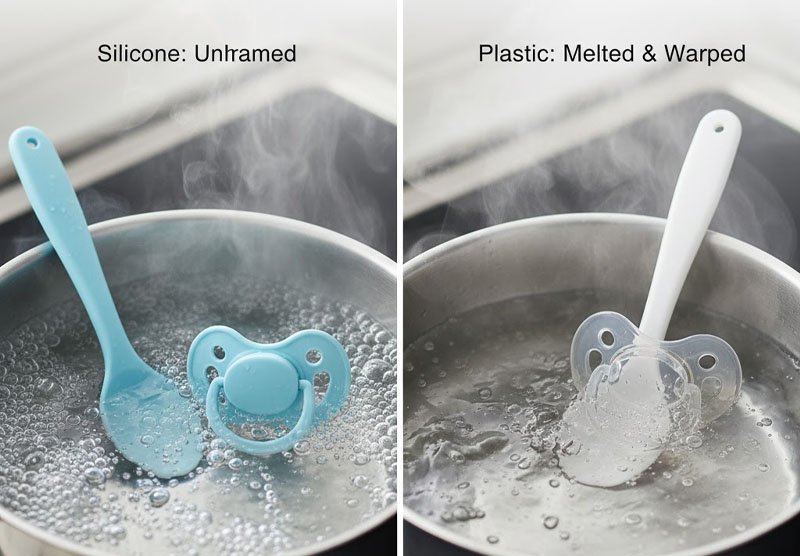
The Heat Test: Silicone Always Wins
I’ve tested both materials in real-world baby product development. Parents often need to sterilize items—boiling water, microwaving, or using steamers. That’s where plastic shows its limitations.
Most plastics start to deform or degrade at 100–120°C (212–248°F). And when exposed repeatedly to high heat, they become brittle. In contrast, food-grade silicone easily handles temperatures from -40°C to +230°C (-40°F to 446°F) without losing shape or releasing toxins.
Here’s how they compare:
| Feature | Silicone | Plastic |
|---|---|---|
| Boil-safe | Yes | Often No |
| Microwave-safe | Yes | Varies |
| Oven-safe | Yes | Rarely |
| Heat deformation | Resistant | Common |
For me, the ability to endure high-heat cleaning processes without compromising durability makes silicone the smarter, long-term material choice.
What about wear and tear over time?
The longer you use a product, the more stress it takes—especially in daily-use baby and kitchen items.
Silicone resists cracking, tearing, and discoloration far better than plastic, which weakens with frequent use.
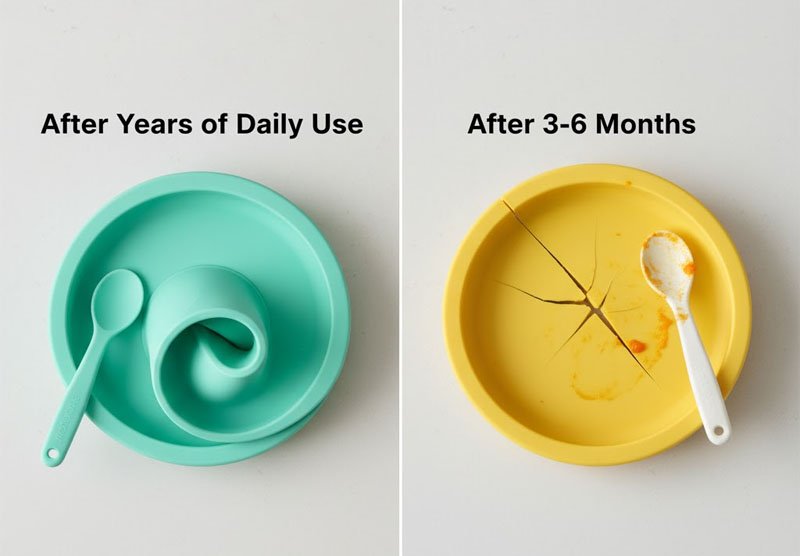
Long-Term Durability in Action
In my own product testing, I’ve seen plastic baby spoons that cracked after three months. I’ve seen plastic containers stained beyond recognition. But silicone holds its shape and color for years.
Silicone’s molecular structure allows it to bend and flex without weakening. It doesn’t chip or crack like plastic. Even after heavy use—bending, stretching, dropping—silicone remains stable. Plastics, especially cheaper types like polypropylene or polystyrene, begin to degrade. They lose flexibility, discolor, and become fragile.
| Durability Factor | Silicone | Plastic |
|---|---|---|
| Flexibility Retention | High | Low (becomes brittle) |
| Stain Resistance | Strong | Weak |
| Structural Integrity | Long-lasting | Prone to breaking |
| UV Exposure Tolerance | Resists yellowing | Easily discolors |
This is why so many high-quality baby and kitchen brands—including us at RuiYang—choose silicone for long-term durability and customer satisfaction.
How do both materials handle freezing and cold temperatures?
It’s not just heat—cold can also test a product’s durability.
Silicone stays flexible and intact even at freezing temperatures, while plastic becomes brittle and may crack.
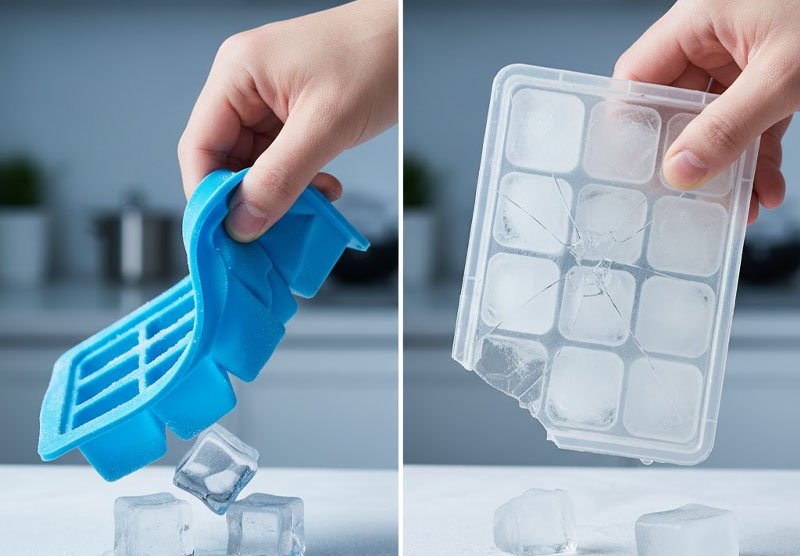
The Cold Test: Flex vs. Fragile
Think about freezing baby puree, storing leftovers, or transporting snacks in winter. Products exposed to freezing conditions need to handle the cold without cracking.
Silicone is naturally flexible—even at -40°C. It won’t lose shape or strength. I’ve seen silicone containers go straight from the freezer to the microwave without damage.
Plastic, on the other hand, often becomes stiff and brittle. When dropped, frozen plastic items can crack. And if you use them in freezers repeatedly, the material gradually weakens.
Here’s a breakdown:
| Cold-Weather Feature | Silicone | Plastic |
|---|---|---|
| Freezer-safe | Yes | Sometimes |
| Brittle when frozen | No | Yes |
| Cracking risk | Low | High |
| Maintains flexibility | Yes | No |
Silicone’s ability to handle temperature swings without losing durability makes it ideal for multifunctional, long-lasting products.
Is silicone or plastic more resistant to staining and odors?
Daily use involves exposure to sauces, oils, and colorful foods that leave their mark.
Silicone is more stain-resistant and odor-resistant than plastic, which tends to absorb color and smell over time.
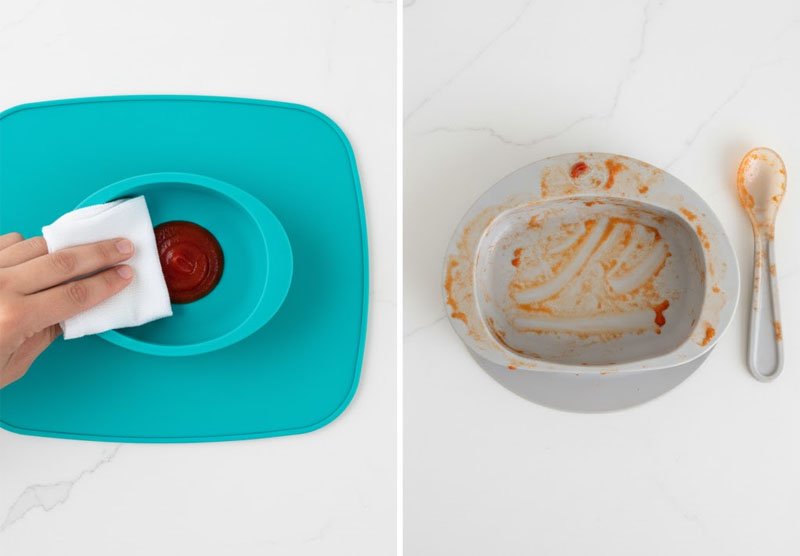
Staying Clean, Staying Fresh
I’ve seen this firsthand: plastic spoons turning orange from carrot puree. Containers retaining garlic smell even after multiple washes. It’s a major customer complaint—and a sign of low durability.
Silicone, because it’s non-porous, doesn’t absorb pigments or odors as easily. A good wash—by hand or dishwasher—restores it to like-new condition. You can also boil silicone to deep-clean it without damaging the material.
| Staining Risk | Silicone | Plastic |
|---|---|---|
| Tomato Sauce | Low | High |
| Curry/Oil | Low | High |
| Odor Absorption | Minimal | Significant |
| Cleaning Ease | Easy | Often Difficult |
Durability isn’t just structural—it’s also about keeping the product usable and appealing after hundreds of meals.
How often do you need to replace silicone vs plastic products?
Replacement frequency affects cost, convenience, and environmental impact.
Silicone products can last for years with daily use, while plastic products often need replacing within months due to wear or damage.
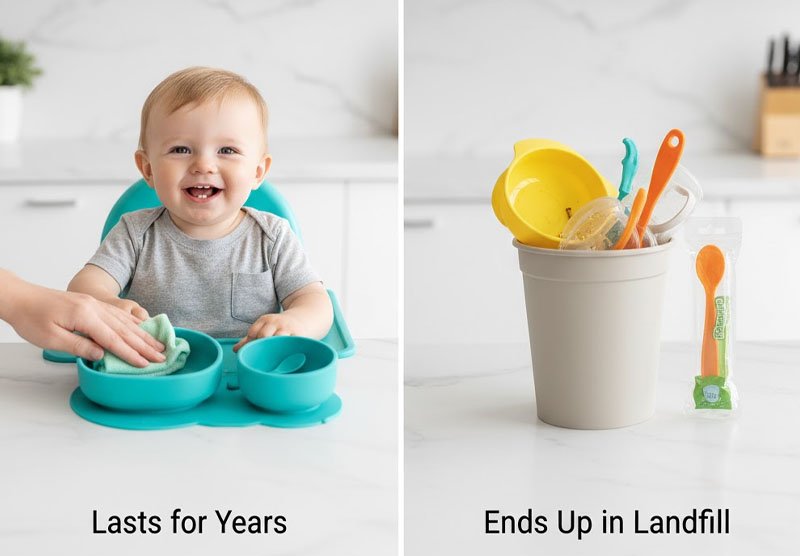
Longevity That Pays Off
One reason we shifted to silicone in our own product lines was customer feedback. Plastic items often needed to be replaced within 3–6 months, especially when exposed to heat or rough handling.
Silicone products routinely last 1–5 years depending on usage. That means less waste, fewer returns, and better overall value for both families and businesses.
| Usage Scenario | Silicone Lifespan | Plastic Lifespan |
|---|---|---|
| Daily Baby Feeding | 2–4 years | 3–6 months |
| Kitchen Containers | 3–5 years | 1–2 years |
| Utensils | 2–3 years | 6–12 months |
The longer product life of silicone means you’re not constantly buying, replacing, and disposing—benefitting both your wallet and the planet.
How does durability affect sustainability?
Durability isn’t just practical—it has long-term environmental consequences.
Silicone’s extended lifespan reduces waste and resource consumption, making it a more sustainable choice compared to short-lived plastic.
Long-Term Thinking for a Cleaner Future
In today’s market, product durability is closely linked to sustainability. Frequent replacement leads to more plastic waste. Most plastics are difficult to recycle and end up in landfills.
Silicone, while not biodegradable, is more sustainable due to its reusability and recyclability through specialty programs. Some manufacturers, like us at RuiYang, are exploring ways to close the loop—reclaiming and reusing silicone scraps in new molds.
Here’s the big picture:
| Sustainability Factor | Silicone | Plastic |
|---|---|---|
| Replacement Rate | Low | High |
| Recyclable (special) | Yes | Rarely |
| Degrades Into Microplastics | No | Yes |
| Longevity | 5–10x longer | Short-term |
The longer a product lasts, the fewer resources we consume and the less waste we generate. Choosing silicone means thinking beyond just today’s convenience.
Conclusion
Silicone wins the durability battle in almost every category—heat resistance, lifespan, flexibility, and safety. When you want lng-lasting, high-performance products, silicone is the smart choice.